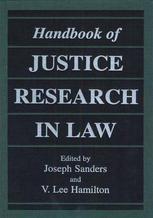

Most ebook files are in PDF format, so you can easily read them using various software such as Foxit Reader or directly on the Google Chrome browser.
Some ebook files are released by publishers in other formats such as .awz, .mobi, .epub, .fb2, etc. You may need to install specific software to read these formats on mobile/PC, such as Calibre.
Please read the tutorial at this link: https://ebookbell.com/faq
We offer FREE conversion to the popular formats you request; however, this may take some time. Therefore, right after payment, please email us, and we will try to provide the service as quickly as possible.
For some exceptional file formats or broken links (if any), please refrain from opening any disputes. Instead, email us first, and we will try to assist within a maximum of 6 hours.
EbookBell Team

5.0
18 reviewsJustice—a word of great simplicity and almost frightening scope. When we were invited to edit a volume on justice in law, we joked about the small topic we had been assigned. Often humor masks fear, and this was certainly one of those times. Throughout the project, we found daunting the task of covering even a fraction of the topics that usually fall under the umbrella of justice research in law. Ultimately, the organization of the book emerged from the writing of it. Our introductory chapter provides a road map to how the topics weave together, but as is so often the case it was written last, not ?rst. It was only when we had chapters in hand that we began to see how the many strands of justice research might be woven together. Chapters 2–4 on the basic forms of justice—procedural, retributive, and distributive—are the lynchpin of the volume; they provide the building blocks that permit us to think and write about each of the other substantive and applied chapters in terms of how they relate to the fundamental forms of justice. In the large central section of the volume (Chapters 5–9), the contributors address many ways in which the justice dimensions relate to one another. Most important for law is the relationship of perceptions of procedural justice and the two types of substantive justice—retributive and distributive.